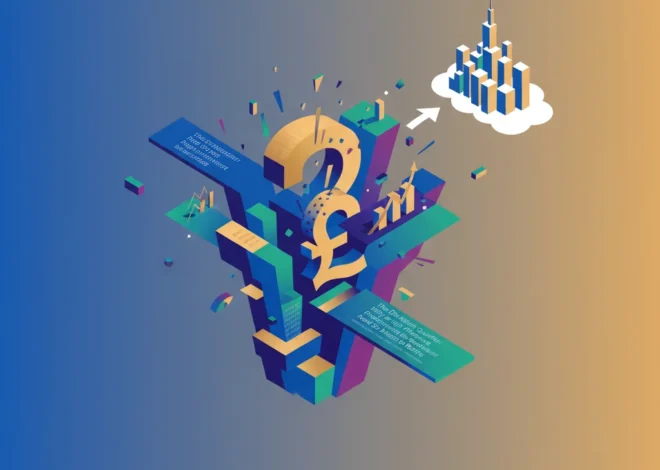
The Investor’s Cryptic Crossword: Decoding the Complexities of the Modern Economy
For many professionals, the day begins not with a market report, but with a puzzle. The cryptic crossword, particularly a formidable challenge like the Financial Times crossword, is more than a simple pastime. It is a rigorous mental workout, a daily ritual of decoding complexity, identifying hidden patterns, and exercising strategic patience. While seemingly a world away from the fast-paced domains of finance and investing, the skills honed by tackling these black-and-white grids are remarkably analogous to those required to successfully navigate the intricate and often enigmatic world of the modern economy.
Just as a cryptic clue has both a surface reading and a deeper, structural meaning, so too do market indicators and economic headlines. The successful investor, much like the master crossword solver, learns to look beyond the obvious, question assumptions, and understand that every piece of the puzzle is interconnected. This post explores the parallels between these two disciplines, revealing how the logic of the cryptic crossword can provide a powerful framework for understanding financial markets, developing robust investment strategies, and making sense of an increasingly complex global economic landscape.
Reading the Clues: Differentiating Market Noise from Economic Signals
A typical cryptic clue, such as one from a recent FT Crossword (No. 18,214), presents a sentence that reads like a plausible, if slightly odd, phrase. However, the solver knows this is a misdirection. The clue contains two distinct parts: a direct definition and a cryptic wordplay element (like an anagram, a reversal, or a hidden word). The challenge lies in separating the two to arrive at the correct answer.
This is a perfect metaphor for modern market analysis. The “surface reading” is the daily deluge of news headlines, social media chatter, and sensationalist market commentary. This is the noise. The “cryptic wordplay,” however, is the underlying data: earnings reports, inflation figures, central bank minutes, and geopolitical shifts. A novice investor might react emotionally to a scary headline (the surface reading), while a seasoned professional delves into the fundamentals (the wordplay) to understand the real story. This is the core difference between speculation and strategic investing.
Consider the recent discourse around inflation. The headline “Inflation Spikes!” can trigger panic selling. But the discerning analyst, like a crossword solver, breaks it down. Is the inflation broad-based or concentrated in volatile sectors like energy? Is it driven by supply chain shocks or by sustained consumer demand? What are the forward-looking indicators suggesting? According to a report from the International Monetary Fund, understanding these nuances is critical, as the “last mile” of taming inflation can be the most challenging. The ability to parse these components is essential for navigating the stock market without being swayed by transient noise.
Across & Down: The Interconnectedness of Global Finance
No crossword clue exists in a vacuum. The answer to 1-Across must align with the answers for every “Down” clue it intersects. A single incorrect letter can render a whole section of the puzzle unsolvable. This intricate web of dependencies is a powerful illustration of the global financial system.
A decision made by the Federal Reserve in Washington has immediate repercussions for trading desks in Tokyo and London. A disruption in a Taiwanese semiconductor factory can impact auto manufacturing in Germany and the stock price of tech companies in California. In our hyper-connected world, the principles of the economy are governed by this same interlocking logic. Portfolio diversification is the investor’s primary tool for managing this reality—it’s the strategic equivalent of not committing to a “Down” answer until you have a few corroborating letters from the “Across” clues.
The 2008 financial crisis serves as a stark reminder of this interconnectedness. What began as an issue in the U.S. subprime mortgage market quickly cascaded through the global banking system, demonstrating how a weakness in one corner of the grid could threaten the entire structure. Modern risk management, therefore, isn’t just about analyzing a single company or asset; it’s about understanding the systemic relationships—the “Across” and “Down” forces—that shape market outcomes.
Anagrams and Hidden Words: Uncovering Value with Fintech and Blockchain
Two classic cryptic crossword devices are the anagram (“company profit is scrambled”) and the hidden word (“part of the plan is to win”). Both involve finding a new order or a secret value within the existing text. This is precisely what disruptive innovators and value investors do in the financial world.
- Value Investing as Anagram: A value investor looks at a company whose components (assets, cash flow, brand equity) are being undervalued by the market. They see the “scrambled letters” of a poorly performing stock and mentally rearrange them to see the potential for future growth and profitability. They are, in essence, solving an economic anagram.
- Disruptive Fintech as Hidden Word: Many of the most successful fintech companies didn’t invent entirely new financial services. Instead, they found inefficiencies “hidden” within the traditional banking and payment systems. Companies like Stripe and Square saw a simpler way to process payments embedded within complex legacy infrastructure. They extracted the “hidden word” to create enormous value.
Similarly, blockchain technology can be seen as a fundamental reordering of the letters of finance. It takes existing concepts like ledgers, transactions, and ownership and rearranges them into a decentralized, transparent system. While its full impact is still being written, its potential to disrupt everything from cross-border payments to asset ownership is a testament to the power of finding new patterns in old systems. A PwC report on FinTech highlights how this re-imagining of services is a key driver of the industry’s growth.
The China Conundrum: Why US Businesses Can't Quit the World's Largest Market
The following table illustrates how the strategic thinking applied to a crossword puzzle can be directly mapped to modern investment philosophies.
| Crossword Solving Principle | Corresponding Investment Strategy |
|---|---|
| Parse the Clue (Definition vs. Wordplay) | Fundamental Analysis: Separating market noise and headlines from underlying economic data and company performance metrics. |
| Use Intersecting Letters (Across & Down) | Portfolio Diversification & Risk Management: Understanding how different asset classes and global markets are interconnected and balancing them to mitigate risk. |
| Solve Anagrams (Rearrange the Letters) | Value Investing: Identifying undervalued assets by re-evaluating their components to see hidden potential that the broader market has missed. |
| Start with the Easiest Clues First | Building a Core Portfolio: Establishing a foundation of stable, well-understood investments (e.g., index funds) before venturing into more speculative or complex assets. |
| Pencil In, Don’t Ink In (Be Willing to Erase) | Dynamic Asset Allocation: Maintaining a flexible strategy and being willing to re-evaluate and change positions as new information and market conditions emerge. |
The Final Grid: Embracing Uncertainty and Lifelong Learning
No one completes the FT crossword in a single, linear pass. The process is iterative. You fill in what you know, which provides new letters and fresh insight into more difficult clues. You make educated guesses, sometimes you’re wrong, and you have to erase and rethink. This process of dealing with incomplete information and adapting your strategy on the fly is the very essence of investing.
We never have all the data. The future is inherently uncertain. The best we can do is build a robust framework for decision-making, leverage the best financial technology and tools at our disposal, and remain intellectually humble and curious. The world of economics and finance is not a static puzzle that, once solved, is complete. It is a new crossword every single day, with new clues, new patterns, and new connections to be made.
The true master of both the crossword and the market is not the person who knows all the answers, but the one who has mastered the process of finding them. They embrace the challenge, respect the complexity, and understand that the ultimate reward is not just a completed grid, but the intellectual growth that comes from the daily act of solving the puzzle.
The Font of All Money: How Typography Shapes Investor Trust and the Global Economy
In the end, whether you’re staring at a grid of black and white squares or a screen of flashing stock tickers, the underlying goal is the same: to bring order to chaos, to find signal in the noise, and to make the strategic connections that lead to a successful outcome.


